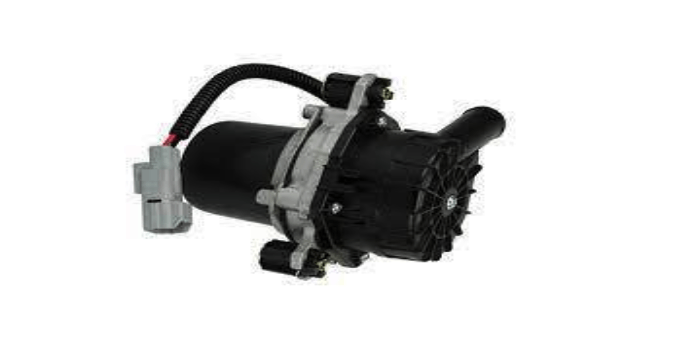Get Your Free Quote
- Best Price Guarantee Buy with confidence because you aren't getting a better price than this.
- Free Shipping
Enjoy the luxury of free shipping on orders above $299. - A Grade Quality Used Car Parts
Avail the best OEM Auto parts & components that are just as new. - Our Friendly Parts Specialist will get you what you need !!
Air Injection Pump (or) Air Pump System

Air injection is a method of reducing exhaust emissions by injecting air into each of the exhaust ports of an engine so that air mixes with the hot exhaust and oxidises HC and CO
forming H2O and CO2- During the early days of emission control, it was an easy task to meet the required emission standards through air injection. Air injection, also known as the air pump system, was one of the first add-on devices to oxidise HC and CO in the exhaust. By 1966 Chrysler, the only domestic manufacturer, was not using an air pump system on at least some cars.
Early air injection systems used many hoses and tubes placed across the engine so that it became inconvenient to work on the engine, and hose failure due to engine heat also became common.
(786) 550-5786
Chrysler chose engine modification instead of air injection and could meet emission standards without the add-on pump system. Other manufacturers also gained from Chrysler’s experience, and depended more on engine modifications and less on air injection for their cars of the late 1960′s. Therefore, the use of the air injection system on cars decreased until the year 1972, when stricter emission standards were set, so that even Chrysler installed an air injection system on some engines. As emission standards became stricter during the 1970′s, air injection became more popular.
Even with the introduction of a catalytic converter in 1975, the air pump system could not be abandoned. It is because the extra air supplied by the injection system became useful to increase the catalytic action on many engines. With these changes, the air injection system became almost a permanent part of emission control for many engines.
Manufacturers use different names for their air injection systems, for example American Motors call it Air Guard, Chrysler names it Air Injection System, Ford calls it Thermactor Air Injection System and General Motor names it Air Injector Reactor (AIR). Irrespective of the name, all systems are simple and basically the same. A belt-driven air pump supplies fresh air to the injector nozzles installed in the exhaust manifold or cylinder head, so that air mixes with the hot exhaust leaving the engine. This helps the oxidation process necessary to reduce HC and CO emissions.
(786) 550-5786
Basic System Components and Operation
The basic air injection system constitutes the following components:Air supply pump with filter.
The air-pumps, installed at the front of the engine, are belt-driven from the crankshaft. The pump draws fresh air in through an external filter and supplies it under slight pressure to each exhaust port through connecting hoses. Addition of this extra air to the hot HC and CO emissions in the exhaust manifold causes oxidation so that these constituents are converted into H2O and CO2.
Air manifolds and nozzles
Early air injection systems used one of the following two methods to deliver air to the engine’s exhaust system :
On smaller engines an external air manifold distributes the air through injection tubes to the exhaust port near each exhaust valve.
On larger engines an internal air manifold distributes the air to the exhaust port near each exhaust valve through passages in the cylinder head or the exhaust manifold.
(786) 550-5786
Anti backfire valve.
During engine deceleration, high intake manifold vacuum allows the air-fuel mixture to become fuel rich. If fresh air is supplied into the exhaust manifold during deceleration, it mixes with excess unburned fuel in the exhaust, causing engine backfire. This backfire is a rapid combustion of the unburned gases, which can blow a muffler apart. To prevent this, an anti-backfire, or backfire sup-presser, valve is incorporated to shut off the air flow during deceleration. Both the gulp valve and the diverter valve are used to stop air flow.
Check valve.
A 1-way check valve stops reverse flow of exhaust gases through the air pump from the engine. The check valve is placed in between the air manifold and the diverter valve or the gulp valve. When exhaust pressure is higher than air injection pressure, or if the air pump fails, the check valve spring closes the valve to stop the reverse flow of exhaust. A single check valve is normally used on in-line engines, and two valves (one per cylinder bank) are normally installed on V-type engines. However, some V-type engines also use only one check valve.
(786) 550-5786
Second Generation Air Injection Systems
Air injection systems used with catalytic converters perform the same job as the air injection system described above, i.e. adding fresh air into the exhaust system to oxidise the HC and CO in the exhaust gases.
These second-generation systems also use many of the components of the non-catalytic systems. However, they need more elaborate controls for effective use with the catalytic converter and the design of this control varies to certain extent among the different vehicle manufacturers.
Chrysler used an air switching valve in their catalyst air injection system in some 1977 California engines, to switch air pump output from the exhaust ports to the right exhaust manifold.
An engine coolant vacuum switch operates the valve when the coolant warms up sufficiently. This causes the valve to switch the fresh air from the exhaust ports, “downstream” to the exhaust manifold so that oxidation of HC and CO in the catalytic converter is supported without interfering with the NOx control by the EGR system. A bleed hole in the valve provides a small continuous airflow to the exhaust ports.
(786) 550-5786